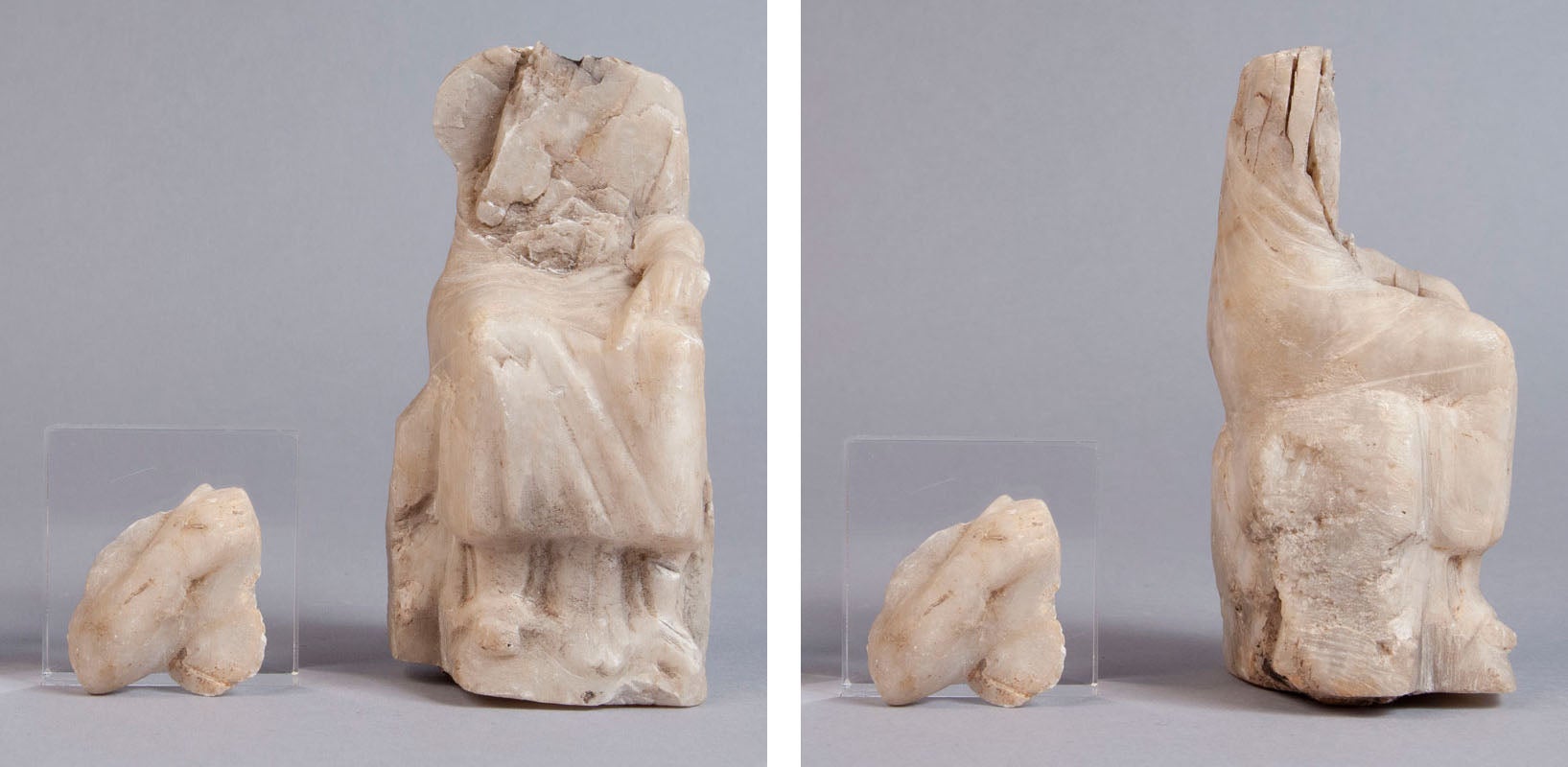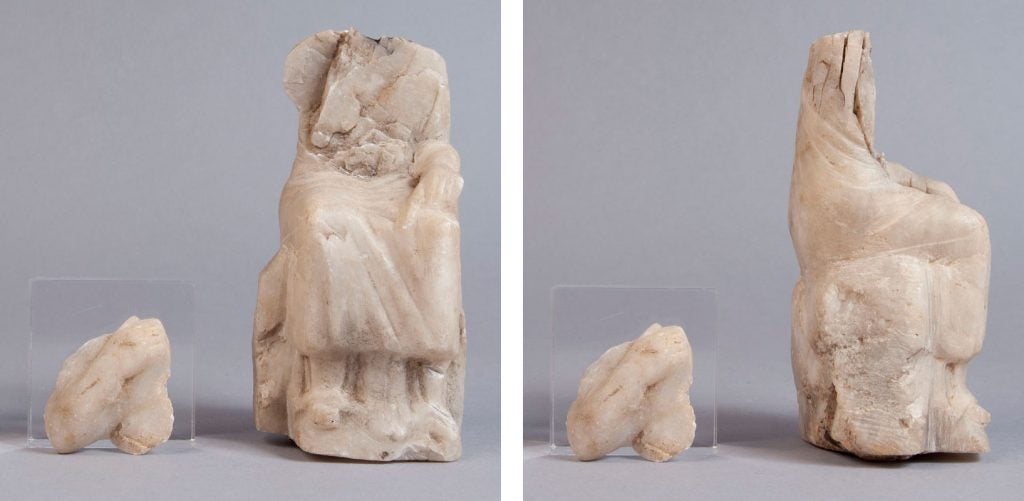By Caroline Roberts, Conservator
Greetings, Kelsey blog fans! I hope that you are all safe, healthy, and keeping it real at a sound social distance. We weren’t about to let today’s uncertainty get in the way of our ongoing celebration of Ugly Objects. So, it brings me great pleasure to present April’s pick: a seated female figurine from Seleucia. Seleucia on the Tigris was a Hellenistic capital city located south of present-day Baghdad and excavated by the University of Michigan from 1927 through 1937. Over 3,500 objects were recovered from Seleucia, including a myriad of figurines made of bone, ceramic, and stone.

Our seated figurine is made of alabaster, a soft sedimentary stone with a uniquely translucent quality that made it a suitable material for window panes. Alabaster is easy to work, so we find a lot of vessels and figurines carved from it. But that same quality causes the stone to deteriorate easily. The alabaster block used to create this seated figure has broken along its bedding planes, causing the right arm to shear clean off the front of the statue. This type of inherent flaw might be what caused the head to detach — probably while the figurine was in use. Look closely and you can see traces of bitumen resin along the neck and on the base, signs of someone’s effort to repair the figurine in antiquity.
It amazes me how much we can learn from artifacts that were excavated nearly a century ago! Please keep reading our blog and visit the Kelsey website for opportunities to learn more about our collection.




As someone who’s done my share of attempted mending of meaningful objects, I feel solidarity across time and space with the anonymous figurine-repairer of Selucia on the Tigris. In a way, their efforts were successful, in that the object they valued enough to try to restore remains significant today, if only as a UOM.